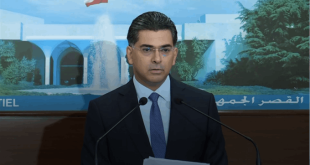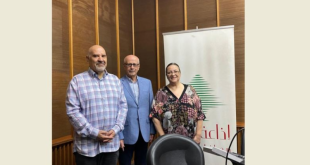Mohamad barely looks surprised when his phone vibrates with an update on the devaluation of the Lebanese pound.
“Great, now my salary is worth $60,” the 30-year-old Syrian economics teacher turned refugee said, shaking his head.
In the past week alone, the Lebanese pound has lost over 40 per cent of its value. Millions of people are watching their savings and salaries disappear as food inflation hits nearly 200 per cent.
Mohamad stood in the market in Beirut’s Shatila refugee camp, trying to calculate how much food he could afford for himself, his wife and two children. In the end, he decides on potatoes for dinner: three potatoes sliced up, with half a red pepper and some cucumbers on the side. That would have to be dinner for four.
“Before the dollar crisis, my monthly salary as a freelance accounting assistant would last 15-20 days. Now it’s only enough for five days. I think they will probably make us all leave our jobs at the end of July… my family are already past the minimum that we can survive on. We borrow from the market to eat for the rest of the month.”
Hit by its worst economic crisis in modern history, the Lebanese pound has lost over 80 per cent of its value since October, when nationwide anti-corruption protests began to rock the country. Despite a decades-long peg of 1,500 to the dollar, people now widely use the black market value of the pound as a reference of the currency’s real worth.
According to a recent UN report, by the end of April over half of the country was struggling to put the most basic produce on the table as food prices had risen by 56 per cent since October. Preliminary results show that between mid-March and May, they rose by 50 per cent.
Accelerated by the pandemic, unemployment is soaring, the value of wages are plummeting and prices continue to skyrocket. Lebanon is also host to around 1.5m refugees – the most per capita in the world.
And it is no longer refugees and other vulnerable people who are concerned about being able to feed their families as Lebanon’s economic turmoil continues to spiral out of control.
“From aid given by the WFP, refugees could afford some food in the past,” said Martin Keulertz, Assistant Professor in the Food Security Programme at the American University of Beirut.
“They were able to consume some lentils, some labneh and so on, but rarely vegetables, fruits were difficult and meat was out of the question. What is very concerning is now the majority of Lebanese people are on a similar trajectory,” he said.
Could Lebanon be heading to a repeat of the 1915-18 famine in which the country lost half of the population? “Absolutely,” said Dr Keulertz.
“By the end of the year, we will see 75 per cent of the population on food handouts, but the question is whether there will be food to hand out.”
“Surely in the new few months we will see a very grave scenario in which people will be starving and people will die from hunger and the knock-on effects of starvation.”
The prospect of widespread hunger in Lebanon also raises increased fears over a second wave of coronavirus, Dr Keulertz explained, as people with compromised immune systems are far more likely to die.
Mohamad is among the more fortunate Syrian refugees in Lebanon in that he still has some work. According to a survey published last week by the UN World Food Programme (WFP), three out of four Syrians in Lebanon have lost their job or have no income.
Abdullah Al-Wardat, WFP’s country director for Lebanon, told the Telegraph that WFP now estimates 83 per cent of the estimated 1.5 million Syrians here are surviving on less than $2.90 per day, the minimum needed for physical survival and a category that is aligned with abject poverty.
After paying rent, Mohamad has the equivalent of $66 to spend on food for his family. Milk for his children cost $18 before the dollar-crisis began, now even after choosing a lower-quality option, the cheapest he can buy it for is $33. A bag of rice is now $10, sugar is $8. The basic staples he used to be able to buy for those $66 would last his family ten days, now they last two.
Much like the economic collapse, Lebanon has been sliding towards food insecurity for decades.
Crumbling infrastructure, a lack of state investment and political mismanagement have left the agriculture sector contributing just three per cent to the annual GDP, despite providing jobs for a quarter of the national workforce.
Like every sector in Lebanon, agriculture is riddled with corruption and powerful traders exploiting both farmers and consumers. Now, coronavirus and the economic crisis have brought Lebanon’s unsustainable approach towards almost every part of its economy crashing down.
 Lebanese Ministry of Information
Lebanese Ministry of Information



